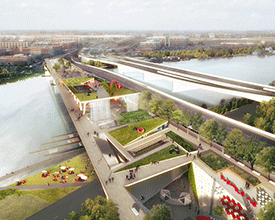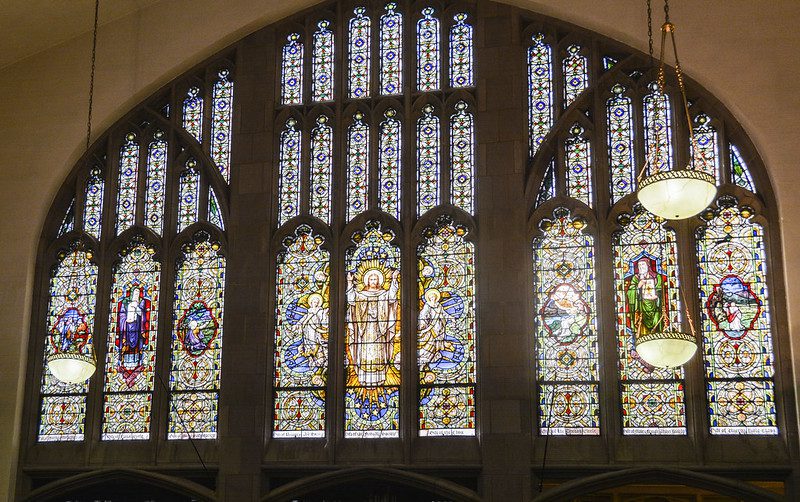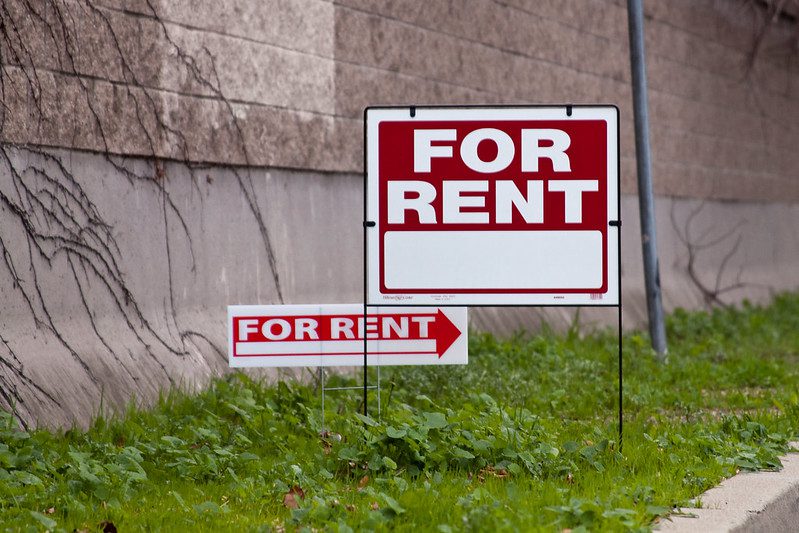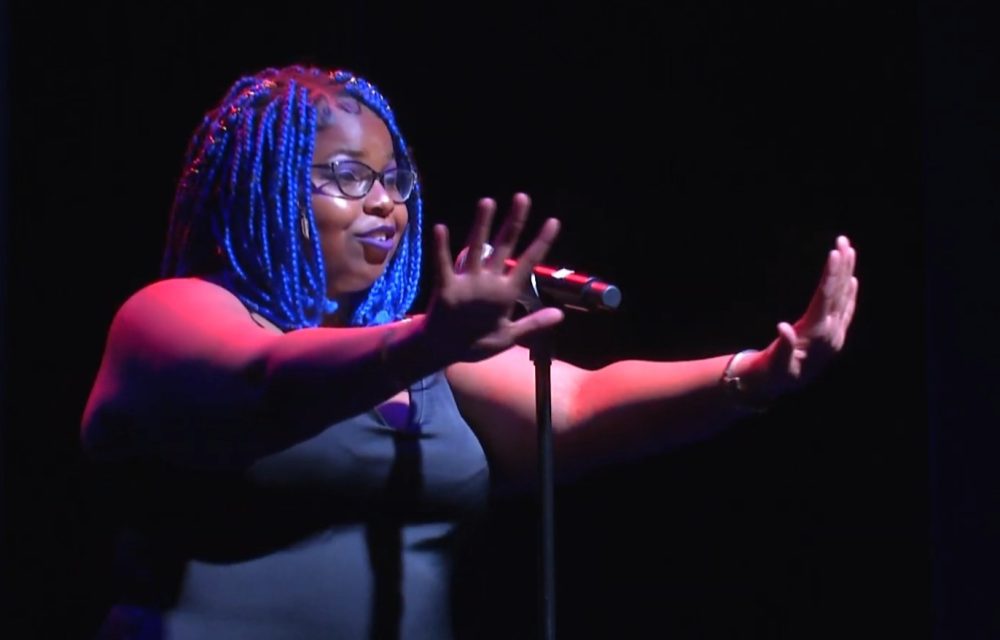
The new park, which will fasten the gentrified Navy Yard neighborhood on the northwest bank to the high-poverty Anacostia neighborhood to the southeast, will open in 2018 or 2019 as the aptly named “11th Street Bridge Park.” The new urbanist, in keeping up with the times, might also label it a steroidal example of creative placemaking.
“In creative placemaking,” writes Ann Markusen and Anne Gadwa in a white paper for the National Endowment for the Arts, “partners from public, private, non-profit, and community sectors strategically shape the physical and social character of a neighborhood, town, city, or region around arts and cultural activities.” The concept and value of creative places is not revolutionary—churches, schools, cafes, and barbershops have all been creative places for eons—but as a coordinated cross-sector urban strategy, it seems to have gained steam in recent years. (The cynic might wonder if this trend has something to do with the concept’s newfound popularity among major funders, but he would be digressing.)
Because the project is so ambitious—and is connected to such a range of stakeholders—it also has had to confront potential tensions and trade-offs at a greater scale than the average city park, both in regards to the space itself and its ripples into nearby neighborhoods. Would one man’s sense of safety become another’s sense of ostracism? Would one woman’s entertainment be another’s irritation? Could it become too popular, too trendy, or too attractive to real estate developers, for whom buzz-generating creative places are like giant bat signals above the flat D.C. skyline? . . .
Bridge Park Director Scott Kratz and his team have worked for over two years—and talked to thousands of residents and stakeholders—to identify solutions. They have a ways to go, but time is nonetheless of the essence. “When the market moves,” Kratz said at a recent rainy-day community meeting hosted by the Bridge Park in neighboring Anacostia, “it moves faster than anybody can do anything about.”
This local reality is especially of concern in Anacostia, to the southeast of the bridge. As a neighborhood where the poverty rate exceeds 35 percent and unemployment exceeds 20 percent, Anacostia fits the profile of a D.C. community that faces economic and cultural displacement in the face of growth. [Editor's note: A reader points out that these appear to be statistics for Ward 8, which includes Anacostia, but which may not accurately reflect the conditions in that particular neighborhood.]
Still, even in D.C., Kratz is confident that the project can be a destination, a community link, a public health resource, and a conduit for equitable development all at once. At the meeting, Kratz summoned a slide displaying a row of silhouettes of D.C. landmarks: the Lincoln and Jefferson Memorials, the Washington Monument, the White House, and the Capitol. Next to them were two crisscrossed lines, representing the Bridge Park. A few laughs arose from around the room.
Kratz, whose uprightness and enthusiasm call to mind Rob Lowe’s character on Parks and Recreation, gave a sheepish grin. “We’re building a bridge!” he said. “We gotta think big!”
Making the River a Destination
After Kratz volunteered to lead the Bridge Park, the first question he asked community members was: did they want a Bridge Park at all? In Anacostia, Kratz says, there was “a completely justifiable trust deficit,” a result of decades of underservice and unmet promises by “people who look exactly like me.”
Kratz recalls being yelled at a lot in his first community meetings, but he found that most people he talked to ultimately saw value in the project. By listening to their concerns, he says, he was often able to earn their trust. Once a critical mass of people were engaged, he discovered something else: many of their preferences were not so disparate. “Every programming idea we built into the design competition came from the community,” he says, “and we heard the same ideas from both sides of the river.”
Now that the design has been selected, Kratz and his team are trying to normalize the idea of the river as a destination. The task is a lot harder in Anacostia, where a six-lane freeway divides the homes from the waterfront park, and so their focus has been on that end. In the coming year, plans are in place for wellness programming in the park (including yoga and tai chi) and a temporary urban beach.
Kratz showed me renderings of plans for another space where visitors will be able to check out hammocks and relax by the water. “Who doesn’t want a hammock grove, right?” he asked.
In April, The Bridge Park team held the first annual Anacostia River Festival, which drew a crowd of several thousand to the waterfront and featured performances by a jazz group, a local gospel choir, and the Navy Band. Kratz shared that next year’s edition will serve as the official closing to D.C.’s Cherry Blossom Festival, a D.C. hallmark that draws lukewarm reactions from many long-time residents, primarily due to the swarm of tourists and traffic it elicits.
The Equitable Development Task Force
Kratz’s other current priority is the Bridge Park’s Equitable Development Task Force, the banner over the aforementioned rainy-day meeting. The eight-member Task Force is in the midst of a one-year process of identifying strategies that the Bridge Park can implement or promote to encourage affordable housing, workforce development, and small businesses in communities surrounding the Bridge Park, with a focus on the more disadvantaged populations.
The process is a strong—and critical—element of the project. It is also a complicated one.
After a series of presentations, the meeting’s forty or so attendees broke out into working groups to identify recommendations for each category of influence. The first group I joined, which focused on workforce development, included a staff member of a local CDFI, representatives of two different cultural places in northwest D.C., an architect, three Anacostia community members, and a freelance writer (me). The conversation was productive, but it was hard for the group to prioritize one strategy over the other—they were all important, and each made the other stronger. And yet, as one resident pointed out, they somehow also seemed insufficient given the challenges of the community.
When it was time for us to vote for our top priorities, I hesitated. I live across the city, and when the project is open, I will likely not visit more than once or twice a year. With just a few people in the group, my vote felt overly influential. (Admittedly, I may have overthought this exercise.) I abstained.
The second group I attended was focused on affordable housing. The breakdown of participants was similar to my first group. An older white woman worried about the influx of millennials. A young black homeowner in Anacostia wanted her property values to go up, but only in moderation. An older black resident spoke up: “I’m a senior,” she said. “We’d love to sell our house for ‘cling-cling.’”
In the end, a lot of orange dots ended up by the recommendation to support a new community land trust in Anacostia. Everyone loves the idea of a community land trust.
Over the next several months, the Task Force experts will synthesize its own input with the results of the meeting—along with those from a meeting across the bridge that afternoon—to bring back a final series of recommendations to the communities. Soon, Kratz will hire a full-time employee to implement them.
Regardless of the messiness of community processes, the level of positivity and trust that pervaded the meeting was unusual. “We want to hear your thoughts,” Kratz said at the onset, “just as this process has been from the beginning.” By that metric, the meeting was a success.
An Unknown Legacy
“The longer I’ve been involved with this project,” Kratz told me, “the more I see the incredible value of civic spaces that can bring together people that otherwise wouldn’t cross paths.” He continued: “You build larger social capital through many different things, but civic spaces play an important part, and we have some of those places in D.C., but we need a lot more. That’s a mark of a truly healthy city.”
If the project does come to fruition, it is not hard to imagine the neighborhood elder rubbing shoulders with the young mother, a pretty picture that Kratz likes to paint. It is also not hard to imagine a lot of moments of tension and discomfort—a degree of “diversity segregation” that Derek Hyra has observed elsewhere in D.C. No amount of local planning and placemaking can wholly overcome broader dynamics of power and privilege. Yet, as Hyra notes, social interactions won’t happen at all without these spaces.
The bigger challenge may prove to be the cultural and economic preservation of Anacostia. “Building partnerships to make sure this can be a rising tide that lifts all boats is critically important,” says Kratz. “It could be an even bigger legacy than building this beautiful park.”
The extent to which the Bridge Park team can beat the market to the punch is unknown, but the depths and sincerity of its effort—and the precedence it has put on community ownership—is worthy of note. I’m not sure, however, to what degree the note is how impressive this particular creative placemaking project is, and to what degree it merely speaks to the shortcomings of so many of its counterparts.
“Somebody called me the other day,” Kratz told me, “and said they were planning a big design competition and asked me for pointers. I said, ‘before we get into the details, tell me about your community engagement strategy.’ He said, ‘we want to get the design up and we have funders, and then we’re going to engage the community.’ I said, ‘I totally get where you’re coming from, but if you follow that path, you’re going to run into a buzz saw of opposition . . . trust me, it makes a lot more sense to make the investment now.’ There was a large sigh on the phone.”
(Photo: Rendering of 11th Street Bridge Park, Courtesy of OMA+OLIN)






This piece is not entirely factually accurate and some of the over-generalizations by the author are extremely disconcerting.
There is no “decrepit old bridge” at all. The old 11th Street Bridge was replaced with a new bridge and new spans. What is left are pilings from the old bridge. The new project would build the entire span using the still viable pilings.
The author mentions the Navy Yard and Anacostia but—despite being a DC resident—does not understand that Anacostia is a neighborhood, not an entire region of the city. The statistics he cites (unemployment, poverty rate) are those for the entire Ward 8. Many neighborhoods constitute Ward 8, and, in fact, Anacostia is not a high poverty neighborhood. The author is reasserting a common problem: the generalized and concrete other. White neighborhoods get specificity. Black neighborhoods get generalizations.
It is unclear why the author refers to the Bridge Park as a creative placemaking project. It is a public space for recreation, education, civic events, and, yes, performance; however, arts and creativity are not central to the space. The project is more accurately defined as infrastructure reuse.
Finally, as a journalist, writer, or member of the media, following standard ethics, the author should not have participated in the break out sessions in the manner in which he described.
Thank you for your feedback. We have clarified the statistics and welcome other perspectives on the subject certainly, especially from those directly involved.
As for whether the author’s participation in the event was inappropriate, however, I would disagree. This is a blog post, and is clearly expressing an opinion. People who attend community meetings are allowed to interview people and write about their experiences and opinions, and as a DC resident, he had an interest in the outcome and was honest about his location and relationship to it, to the point of abstaining from a small vote.
Shelterforce has always been a primarily practitioner- and organizer-written publication. Though I would hold a paid reporter to a different kind of standard of arm’s length reporting, I think far more damage is done by writers who pretend to be objective and not involved while harboring biases that slant their writing (and everyone has those) than by writers who are engaged with the material and disclose their relationship so readers can understand the lens through which they are looking.
Please do stay engaged!
Thanks again,
Miriam Axel-Lute
Shelterforce Editor